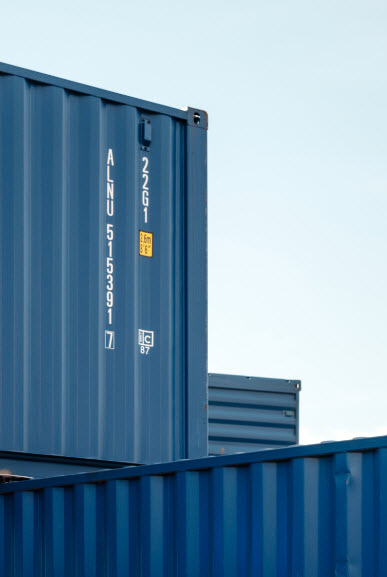FCL Vs LCL Shipping – What Are They & How They Differ?
FCL shipping vs LCL shipment, two method of transportation in ocean freight industry. Sea freight is one of the most preferred methods for international shipping. It has been around for centuries with a wide variety of trading routes available and has improved in the modern world.
In this mode of shipping, container cargo is used to transport the goods safely on ships.
There are two types of container shipping when you use container shipping for sending goods overseas – FCL and LCL. It is important to use the right shipping method for the ocean freight to maximize efficiency and cost-effectiveness for the business.
Here is a detailed guide on the two shipping methods, their procedures, differences, features, cost, advantages and limitations to help you make an informed decision when shipping internationally through sea.
What is FCL Shipping?
FCL meaning Full Container Load is a container shipping option where the shipper uses a container exclusively for his shipment and does not share it with any other shipments. The costs for an FCL shipping are borne entirely by a single party.
Those who have enough cargo to fill a container can use this method for a cost-effective shipping solution. The container need not be fully loaded to use this method.
What is LCL Shipping?
Less than Container Load (LCL) is another shipping method used when a number of cargo shipments share the same container and the container shipping costs. This type of shipments is priced on the basis of the volume of cargo. They are smaller volume shipments that belong to various shippers, tacked together in a single container.
When the shipper does not have enough goods to fill the entire container, he books a cargo that lets him load the products with goods from other shippers. Each of the shipments is separated from the final shipment once delivered to the final destination.
FCL Vs LCL – How They Differ
There are many pros and cons to both FCL and LCL container shipping methods and there are reasons for each to be chosen for a business.
If you are a small to medium-sized company with not enough products to fill an entire container, LCL will be the best method for shipping. If you own a large company with a large volume of goods to ship, FCL shipping will work for you.
Cost Between a Less than Container Load vs Full Container
The cost per unit per freight is higher with LCL than FCL and the import charges have to be paid no matter what the size of shipment is. This makes FCL less expensive as compared to LCL.
However, small to medium-sized businesses can send smaller volumes using LCL to benefit their cashflow. Import fees are fixed for FCL and do not depend on volume which means it can be cheap.
Speed of LCL Freight VS FCL Freight
FCL shipping offers a speedier transit time as compared to the LCL shipment. This is because when an LCL shipment arrives at the port, different shipments need to be consolidated, documentation for each of them should be done and then sorted. Such an increased handling time at origin and destination makes LCL slower than FCL.
Moreover, cargo for FCL can be delivered to its final destination much quicker than LCL. It can be picked up from the terminal as it arrives at the discharge and delivered to the importer as soon as it is unloaded from the vessel. LCL requires more steps and can result in potential delays.
Shipment Damage
As the container for FCL shipment does not contain other cargo, there is a lesser likelihood of damage to the goods. LCL cannot guarantee as many goods are shipped in the same container. An LCL shipment is handled more and has higher risks of damage.
Advantages of FCL Freight
- More cost-effective than air freight
- Affordable when transporting more than 15 cubic meters
- Faster transit than LCL due to lesser handling and unexpected delays
- Fewer risks of damage and higher security as the container is handled less
Advantages of LCL Freight
- More cost-effective for shipments not suitable for FCL
- More cost-effective than air freight
- Reduced inventory investment and more flexibility
- Best shipping method for small volumes
Disadvantages of FCL Shipping
- Not cost effective if shipping less than 15 cubic meters
Disadvantages of LCL Shipment
- More expensive than FCL shipment
- More chances of delay waiting for other consignments to fill the container
- Delays at customs due to other cargos
- Chances of cargo damage in transit if other consignments not packaged properly
Which One is Better for Me?
To decide whether FCL or LCL is the right option for your business, you should consider the volume of the goods you are shipping. To do this, you can calculate the cubic meters for the cargo. If your cargo is less than 15 cubic meters, you can consider LCL shipping method. Moreover, LCL charges for only how much you ship and hence it is a more affordable way to ship or import smaller cargo.
Importers should consider LCL to keep the inventory controlled with smaller purchases from the supplier. If you have a large volume of goods and can bear the full container charges, you can consider FCL as a cost-effective and efficient option.


